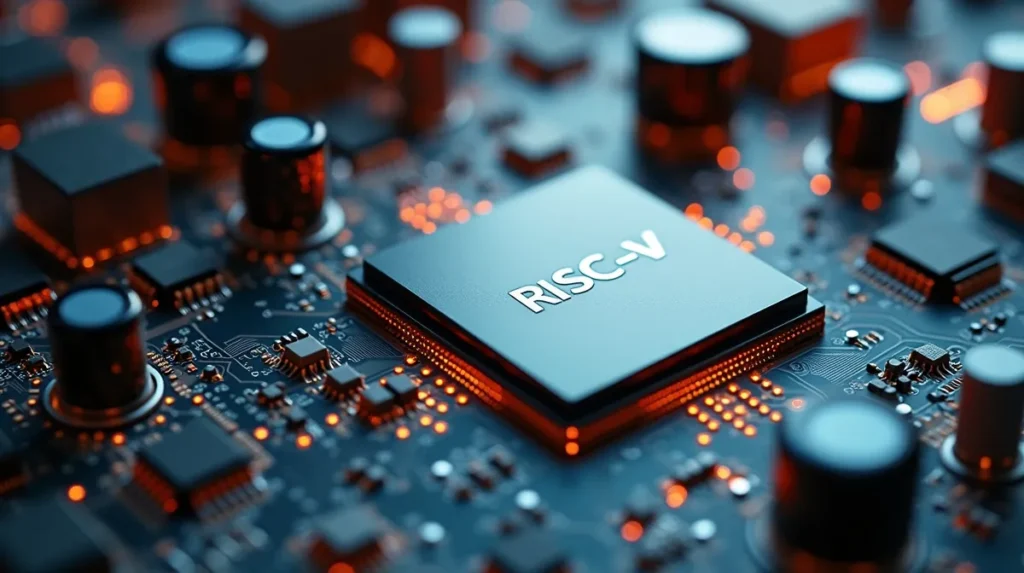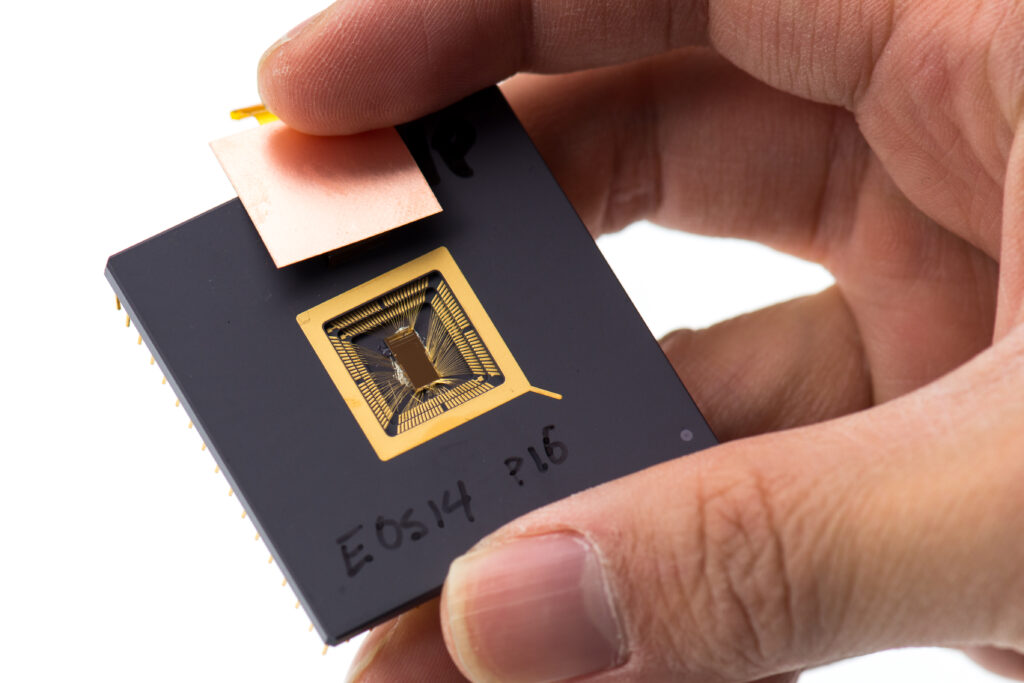RISC-V: The Open Standard Architecture Revolutionizing the Future of Computing

In the rapidly evolving landscape of microprocessor design, RISC-V (pronounced “risk-five”) has emerged as a game-changing open-source instruction set architecture (ISA) that’s transforming how we approach computing systems. As a full-service electronics consultancy at NeoMikro, we’re seeing increasing interest in RISC-V implementations across various industries, from IoT devices to high-performance computing. Let’s explore what makes RISC-V special and why it’s gaining such momentum in the electronics industry.
What is RISC-V?
RISC-V is an open-source instruction set architecture based on established reduced instruction set computer (RISC) principles. Unlike proprietary architectures such as ARM or x86, RISC-V is available under open source licenses, allowing anyone to design, manufacture, and sell RISC-V chips and software without paying royalties.
Born at the University of California, Berkeley in 2010, RISC-V was designed to address the limitations of existing commercial ISAs by creating a modern, clean-slate architecture that would be suitable for a wide range of applications.
flowchart LR
A[RISC-V ISA] --> B[Base Integer Sets]
A --> C[Standard Extensions]
A --> D[Custom Extensions]
B --> B1[RV32I - 32-bit]
B --> B2[RV64I - 64-bit]
B --> B3[RV128I - 128-bit]
C --> C1[M - Integer Multiplication/Division]
C --> C2[A - Atomic Operations]
C --> C3[F/D - Single/Double Floating Point]
C --> C4[C - Compressed Instructions]
C --> C5[V - Vector Operations]
D --> D1[Custom Accelerators]
D --> D2[Domain-specific Extensions]
D --> D3[Vendor Extensions]
style A fill:#4CAF50,stroke:#333,stroke-width:2px
style B fill:#90EE90,stroke:#333,stroke-width:1px
style C fill:#90EE90,stroke:#333,stroke-width:1px
style D fill:#90EE90,stroke:#333,stroke-width:1pxKey Advantages of RISC-V
1. Open Source and Royalty-Free
Perhaps the most significant advantage of RISC-V is its open-source nature. Anyone can implement the RISC-V ISA without licensing fees or royalties, dramatically reducing barriers to entry for new chip designs and fostering innovation.
2. Modularity and Extensibility
RISC-V’s modular design includes a small base integer instruction set with optional standard extensions. This “à la carte” approach allows developers to include only the features they need, optimizing for performance, power efficiency, or chip area based on specific application requirements.
3. Simplicity and Elegance
The RISC-V ISA was designed from scratch with modern computing principles in mind. It avoids the legacy complications and accumulated cruft found in older architectures, resulting in a clean, elegant design that’s easier to implement, verify, and optimize.
| Feature | RISC-V | ARM | x86 |
|---|---|---|---|
| Licensing | Open source, royalty-free | Proprietary, licensing fees | Proprietary, licensing fees |
| Base Instruction Set | Small, clean | Complex | Very complex with legacy support |
| Customization | Highly customizable | Limited | Limited |
| Ecosystem Maturity | Growing rapidly | Mature | Mature |
| Power Efficiency | Excellent | Excellent | Moderate |
4. Scalability
RISC-V scales effectively from tiny embedded microcontrollers to high-performance computing chips. The architecture supports 32-bit, 64-bit, and even 128-bit address spaces, accommodating applications from IoT sensors to data center servers.
5. Future-Proof Design
By being open and extensible, RISC-V can adapt to emerging computing needs and paradigms without being locked into a single vendor’s roadmap. This makes it particularly valuable for long-lifecycle products and strategic technology investments.
Real-World Applications of RISC-V
Industrial Automation
In industrial settings, RISC-V processors offer deterministic performance, security features, and longevity that are crucial for automation systems. The open nature also reduces risk of supply chain disruptions or vendor lock-in.
IoT and Edge Computing
RISC-V’s power efficiency and customizability make it ideal for IoT applications. By selecting only necessary extensions, designers can create extremely low-power processors tailored to specific sensing and data processing tasks.
Consumer Electronics
Companies are increasingly adopting RISC-V for consumer products, from smart home devices to wearables, attracted by the flexibility and potential cost savings of royalty-free architecture.
High-Performance Computing
At the high end, organizations like the European Processor Initiative are developing RISC-V based supercomputer chips, demonstrating the architecture’s scalability from tiny microcontrollers to massive parallel processing systems.
The Growing RISC-V Ecosystem

One of the most exciting aspects of RISC-V is its rapidly expanding ecosystem. What began as an academic project has evolved into a global movement with industry heavyweights like Google, NVIDIA, Qualcomm, and Western Digital making significant investments.
Key components of the ecosystem include:
- Hardware implementations: From open-source cores like BOOM and Rocket to commercial offerings from companies like SiFive and Andes Technology
- Software support: Linux kernel, GCC/LLVM compiler toolchains, and growing RTOS options
- Development tools: IDE integrations, debuggers, and simulation environments
- Industry standardization: Through the RISC-V International organization
Challenges and Considerations
Despite its advantages, RISC-V adoption faces some challenges:
- Ecosystem maturity: While growing rapidly, the RISC-V ecosystem is still maturing compared to established architectures
- Performance optimization: Achieving competitive performance requires skilled implementation
- Fragmentation risk: The freedom to customize carries the risk of ecosystem fragmentation
- Talent pool: Finding engineers with RISC-V experience can be challenging
Getting Started with RISC-V
For those interested in exploring RISC-V, here are some practical starting points:
- Development boards: SiFive HiFive boards, Sipeed Longan Nano, or GD32VF103 boards offer affordable entry points
- Simulators: QEMU, Spike, and Verilator provide platforms for software development
- Educational resources: RISC-V International offers specifications, guides, and training materials
- Community engagement: Participating in forums, GitHub projects, and RISC-V events
The Future of RISC-V
As the electronics industry faces increasing pressure for innovation, customization, and independence from proprietary technologies, RISC-V represents a compelling alternative that aligns with these needs. Its open, modular approach offers benefits across the computing spectrum, from tiny IoT sensors to massive data center servers.
At NeoMikro, we’ve integrated RISC-V solutions into our service offerings, recognizing its strategic importance for our clients’ long-term technology roadmaps. Whether you’re considering RISC-V for a specific project or exploring its potential for your organization’s future, the architecture’s combination of technical elegance and commercial freedom makes it a significant development in the evolution of computing.
The question is no longer whether RISC-V will become a major player in the processor landscape—it already is. The real question is how organizations will leverage this open standard to create the next generation of innovative computing solutions.
Interested in exploring RISC-V for your next project? Contact our team of experts to discuss how this revolutionary architecture could benefit your specific application needs.
